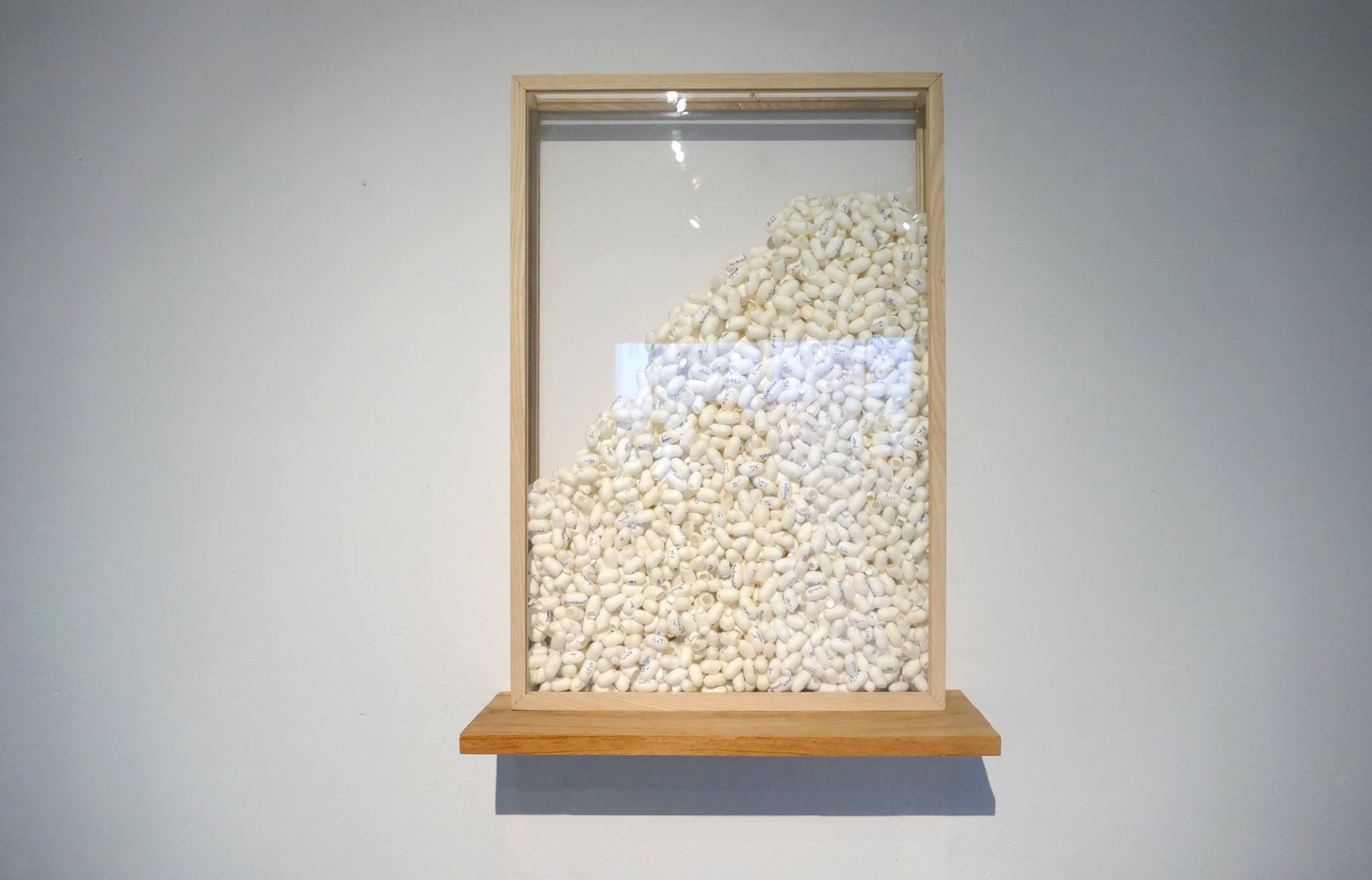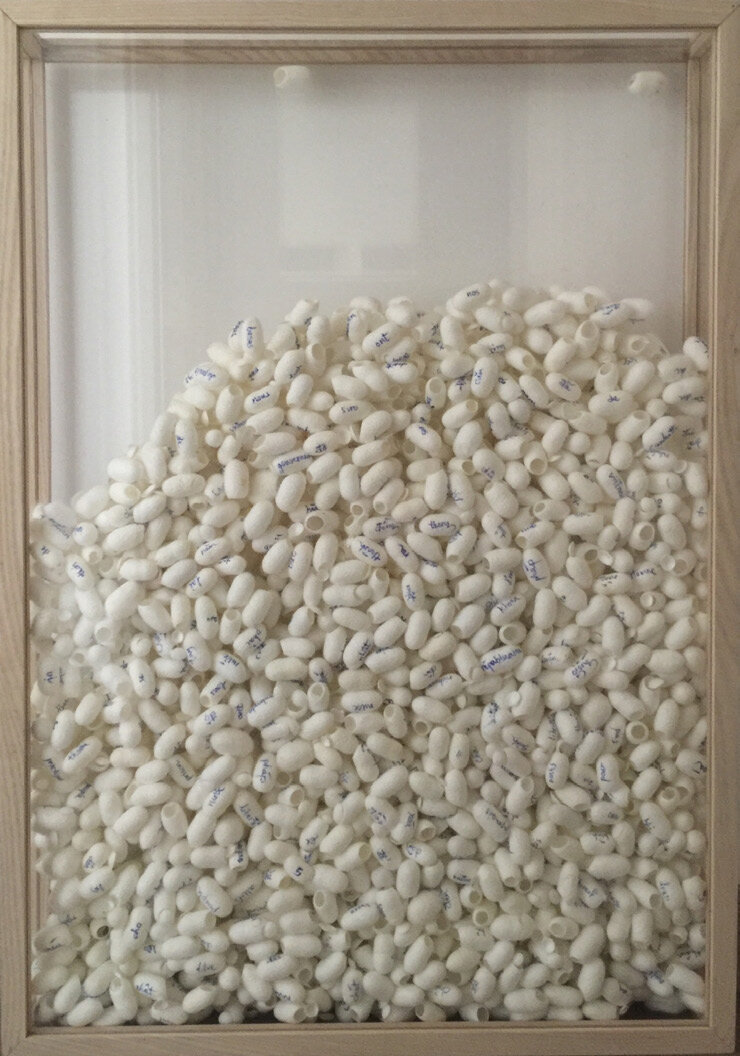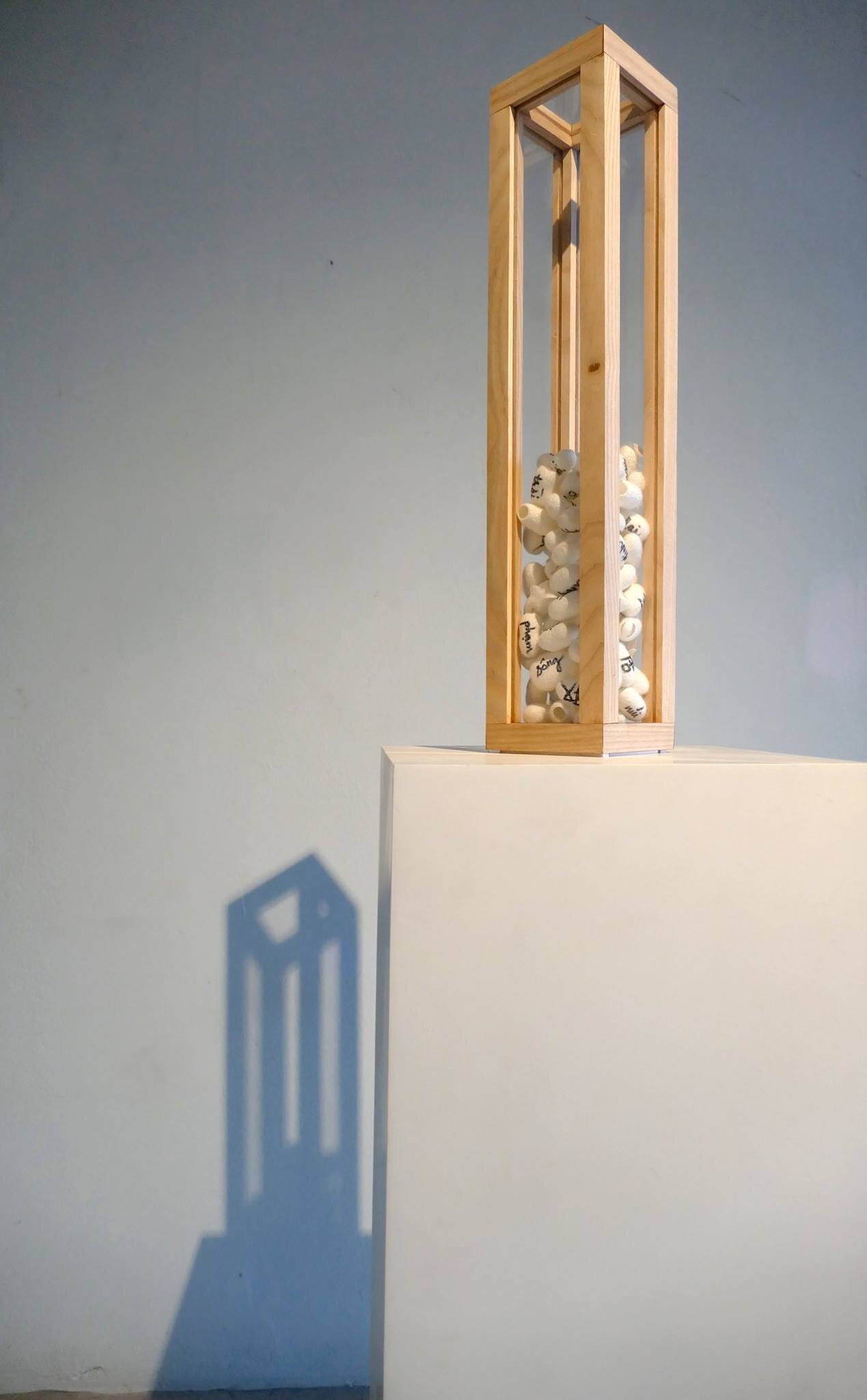declarations of independence
silk cocoon project
2018-ongoing
installation
marker on silk cocoon, wood and plexiglass box.
Declarations of Independence – Silk Cocoons Project
If Cam Xanh’s first act as an artist was to stutter into existence with her word-play poems, the first works from her Silk Cocoons Project mark her own personal ‘Declaration of Independence’. To assume a pseudonym is to claim a new identity, to declare yourself as independent from your past and assert a new beginning—much in the same way a country under colonial rule revolts against its oppressors. The cocoon visually represents both these metamorphic acts.
The works draw you close. Their details evade us. We are forced to look carefully at each cocoon as they are obscured by others, fixed at awkward angles, and written in an unfamiliar hand. They appeal to our curiosity. Their structures are sturdy but not imposing—made from blond wood frames with clear acrylic glass windows, they let in light that reflects around the box. Time becomes a fourth dimension to the work. With every installation the works will appear differently, as their internal arrangements are disrupted in transport. Alternative sentences will appear as new words are revealed from within, and this is the artist’s ultimate goal. “People with big ideas take themselves too seriously,” she says, “everything is temporary.” She asks us to play a game: to dissemble the language of politics, free ourselves from its manipulation, and rearrange these scattered words according to our own will. It’s a game of self-esteem that tells us not to take ourselves too seriously, not to take anything too seriously, especially not Cam Xanh.
Cam Xanh deconstructs language as she physically and conceptually breaks open its gaps. Each sentence is dissected into its component words, whilst the act of doing so looks past authorial intent to see the true significance and consequences of what is being said. If language structures our minds, she is using a sledgehammer to kiss them open—radical, dissenting ideas presented with a delicate, patriotic touch. She takes the languages of her colonizers, and mixes it with her own: Vietnamese & French and Vietnamese & Japanese versions of Ho Chi Minh’s 1945 declaration; Chinese & Vietnamese & Chinese-Vietnamese for the 10th century poem Nam Quốc Sơn Hà (Mountains and Rivers of the Southern Country). By dismembering speeches used to incite war in the name of liberation she restores peace by silencing them. As physical objects the works embody the fragile tension of this quiet, their taught wooden frames capture the cocoons suspended in fall. Their strong, solid presence becomes an existential act of resistance. However, in creating a box we are encouraged to think outside of it; the boxes and words in turn become prisons, just like the safety of the cocoon became a trap for the silkworm. Cam Xanh’s works are instead an incitement to personal freedom, one that has rid itself of deception and propaganda through critical inquisition.
Returning to the past suggests dissatisfaction with the present, with unfulfilled promises. The repetition of this action across multiple works acts like a cry of frustration as history continues to repeat itself: the same desire for independence but different oppressors, oppression mutated. She sees the power of words—words that when used to garner fear and propagate hate enlist us, making murderers of people in the name of Freedom. Feeling failed by language, she chooses not create a new one but simply splits apart what already exists. What’s left is a sense of neutrality and disarmament.


